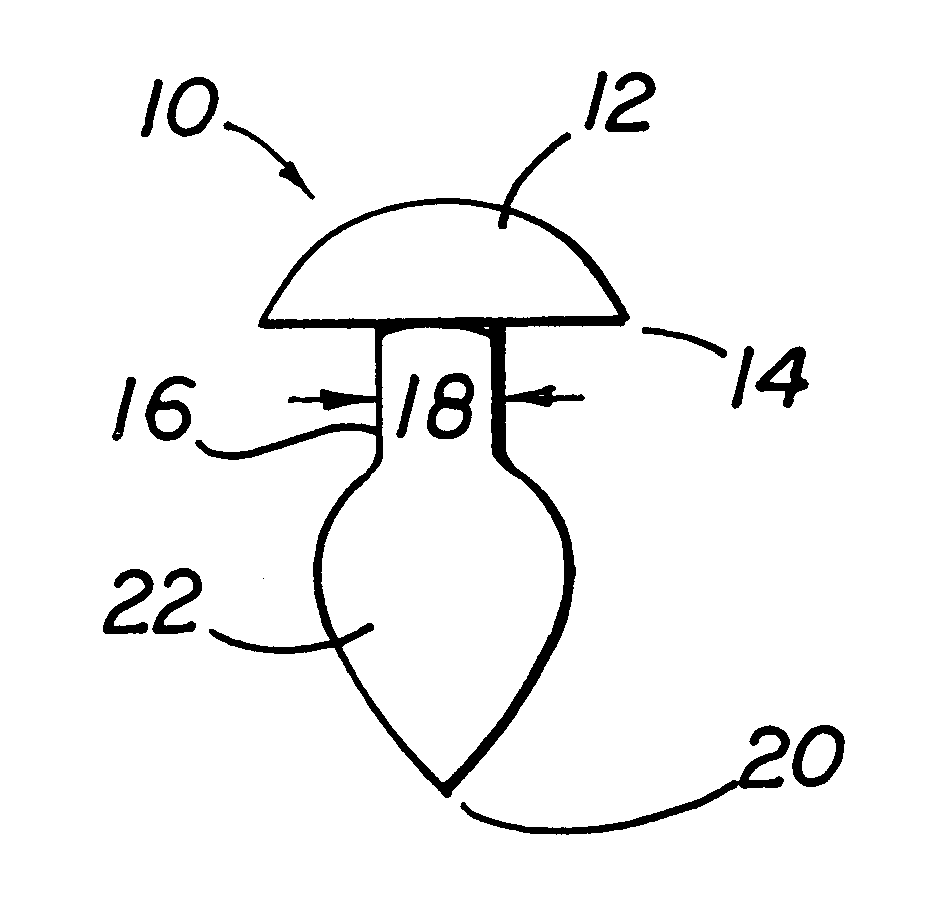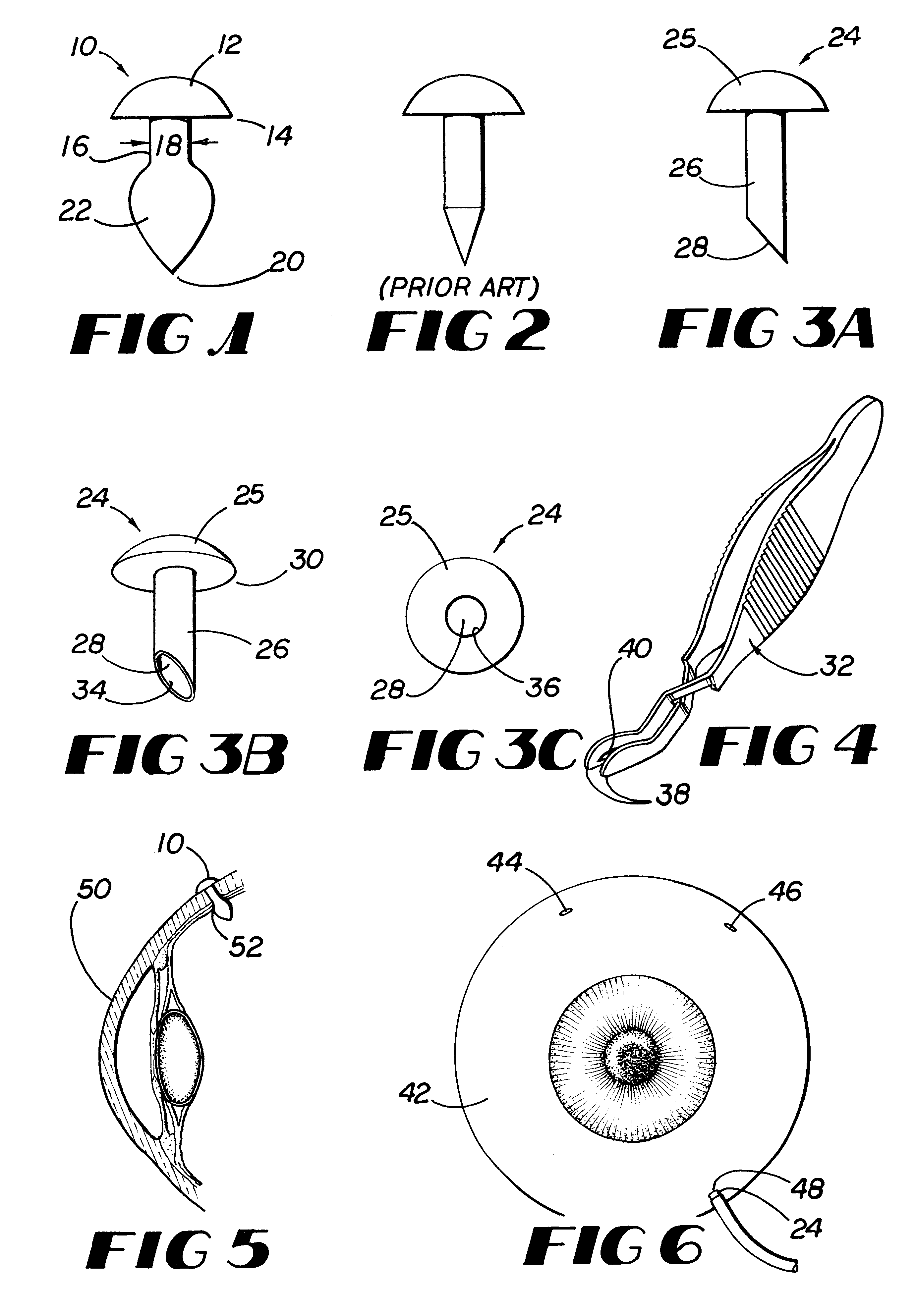Scleral plug system
a plug system and scleral plug technology, applied in the field of scleral plugs, can solve the problems of retinal detachment repair failure, difficult placement of plugs in sclerotomy, and fluid escape uncontrollable through the system,
- Summary
- Abstract
- Description
- Claims
- Application Information
AI Technical Summary
Benefits of technology
Problems solved by technology
Method used
Image
Examples
Embodiment Construction
As shown in FIG. 1, scleral plug 10 has cap 12 at proximal end 14. Shaft 16 is attached to cap 12 at proximal end 14. Proximal end 14 of shaft 16 has diameter 18 that is equivalent to the diameter of the sclerotomy. Distal end 20 has bulbous portion 22. When placed in an eye during surgery, distal end 20 is first placed into the sclerotomy, or opening in the sclera. Bulbous portion 22 passes through the sclera to the interior portion of the eye. Reduced diameter proximal end 14 forms a watertight seal with the sclera. Reduced diameter proximal end 14 has a diameter so that it does not stretch the sclerotomy and is of a length to accommodate the thickness of the sclera. Cap 12 prevents plug 10 from slipping into the eye, while bulbous end 22 prevents plug 10 from slipping out of the eye and thereby disrupting the desired closed system.
As shown in FIGS. 3A-3C, cannulated scleral plug 24 has cap 25, shaft 26 and lumen 28. Cap 25 is attached at proximal end 30. Lumen 28 has distal openi...
PUM
 Login to View More
Login to View More Abstract
Description
Claims
Application Information
 Login to View More
Login to View More - R&D
- Intellectual Property
- Life Sciences
- Materials
- Tech Scout
- Unparalleled Data Quality
- Higher Quality Content
- 60% Fewer Hallucinations
Browse by: Latest US Patents, China's latest patents, Technical Efficacy Thesaurus, Application Domain, Technology Topic, Popular Technical Reports.
© 2025 PatSnap. All rights reserved.Legal|Privacy policy|Modern Slavery Act Transparency Statement|Sitemap|About US| Contact US: help@patsnap.com


